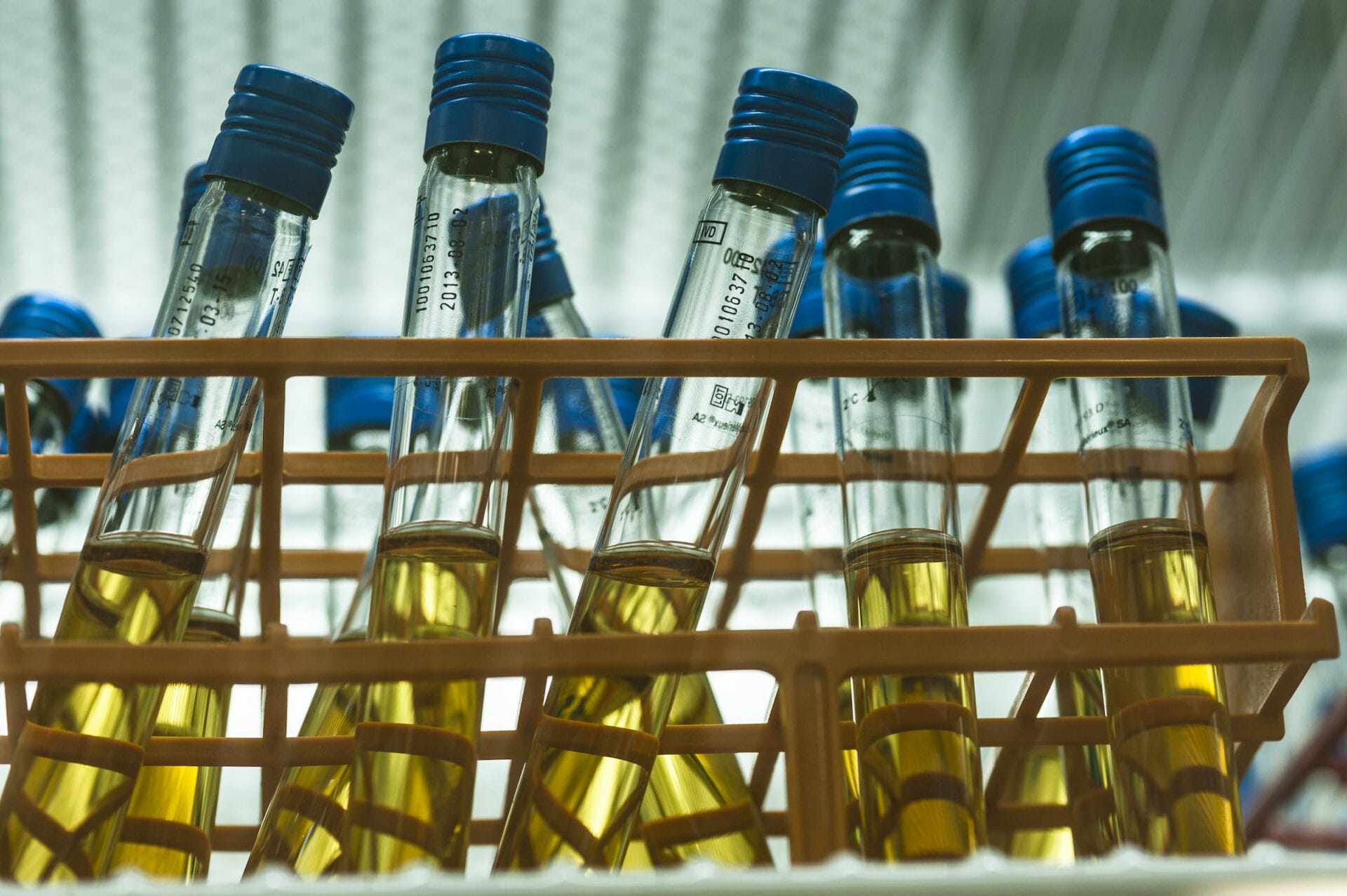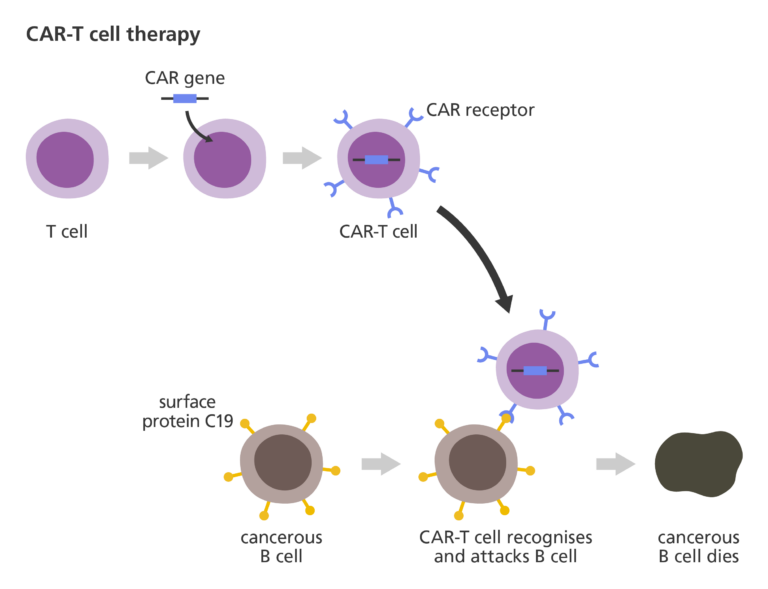Applications of gene therapy
Image Credit: Science Photo Library

Gene therapy has held great potential since its first in-person use in the 1990s. It’s currently used to treat a small number of genetic conditions and is being tested to see if it could be used to treat others.
Key terms
Gene
A section of DNA within a genome that carries a specific set of information - often the information needed to make a protein.
Genetic condition
A condition caused by a change in an individual’s DNA.
Gene therapy
The treatment of a condition through modifying a patient's genes, usually by introducing typically behaving genes to replace non-functioning versions.
Cancer
A common genetic disease caused by mutations in DNA, and characterised by uncontrolled cell growth.
- Gene therapy uses a stretch of DNA to prevent or treat a genetic condition.
- It’s currently used for treating certain types of blood cancers and a small number of rare genetic conditions.
- If key challenges can be overcome, it holds great potential to treat a range of different genetic conditions.
What is gene therapy used to treat?
Blood cancers, such as certain leukaemias and lymphomas
- Gene therapy is currently used to treat certain blood cancers, such as B-cell acute lymphoblastic leukaemia.
- This develops when a subset of white blood cells, called B-cells, become cancerous.
- All B-cells have a molecule on their surface called CD19. Gene therapy works by modifying another group of white blood cells, called T-cells, to attack and destroy any B-cell with a CD19 on its surface.
- This kills all of the body’s cancerous and normal B-cells. Over the next few months, the immune system makes new, normal, non-cancerous B-cells to replace them.
- This treatment is sometimes called CAR-T cell therapy. It’s very effective, with some people’s cancer cleared in just a few weeks.
- The therapy is available in the UK on the NHS for children and young people with B cell acute lymphoblastic leukaemia.

Blindness caused by Leber’s congenital amaurosis
- Leber’s congenital amaurosis (LCA) is a rare inherited eye disease caused by an abnormality in a gene called RPE65 that causes difficulties with vision. Many people ultimately lose their sight and, until recently, there have been few effective treatments for LCA.
- A gene therapy has recently been developed that injects functional copies of the RPE65 gene directly into the eye cells – helping the cells to function normally and restoring sight.
- The treatment, called voretigene neparvovec, was first delivered to patients in the UK in 2020. Many of the patients have since recovered their vision.
- In the UK, the treatment is available for both children and adults – however, it is generally more effective in younger patients, before the condition has had the chance to progress irreversibly.
Metachromatic leukodystrophy (MLD)
- Metachromatic leukodystrophy (MLD) is a rare genetic condition caused by a mutation in a gene called ARSA.
- It causes a toxic build-up of fatty materials like oils and waxes in the nervous system, leading to gradual damage to the nervous system, brain and organs.
- Until recently, there has been no cure for MLD and, without treatment, the condition results in a limited life expectancy.
- However, a revolutionary new gene therapy is now available for very young patients whose nervous system isn’t yet irreversibly damaged – showing total cure of the disease, at least in the short-term.
- The therapy inserts the non-mutated ARSA gene into the patient’s stem cells, producing a protein that can clean up the toxic materials building up in the brain.
- Across 2022 and 2023, a 12-month-old baby, who was born with the mutated ARSA gene, became the first patient in the UK to receive this treatment. By 19 months, she had no signs of the disease.
- At the time, the treatment became the most expensive therapy ever approved for use on the NHS.
What conditions is gene therapy being tested for?
Heart failure caused by the SUMO-1 gene
- Heart failure is a leading cause of hospitalisation in older people. It occurs when the heart becomes too weak and can’t properly pump and circulate blood around the body.
- Some people with heart failure are missing or have lower levels of a gene called SUMO-1.
- Research has found that using gene therapy to replace the SUMO-1 gene in mice and pigs can significantly improve the function of a damaged heart. It also reduced blood pressure.
- The treatment is currently being tested in clinical trials in humans.
Bone grafts for bone cancers
- Bone cancers are often treated by removing the diseased section of bone and replacing it with a donated bone graft – often from a person who donated their body when they died. The donated bone is screwed into place.
- Because the bone is not alive or generating new cells, it wears out quickly and only lasts around 10 years.
- To explore a more sustainable, robust option, researchers investigated the genes and proteins involved in bone growth in mice. Two genes – RANKL and VEGF – were important for healthy bone growth.
- Using gene therapy applied to the bone with a paste during surgery in mice, the researchers activated the expression of these genes in tissue surrounding the dead bone graft. As a result, the mouse’s body treated the bone graft as if it was its own tissue, instead of a foreign object that may be attacked by the immune system.
- The bone graft was even incorporated into the mouse’s own, living bone. New blood vessels began to grow around the graft and the dead bone was converted to new, healthy bone, within a year.
- Although this is yet to be tested in clinical trials for use in humans, it is hoped that it will be a viable option in the near future.